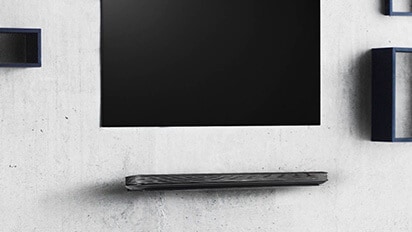At a Glance
Congratulations on your new LG gas range. Installation and service must be performed by an authorized licensed installer, service agency, or gas supplier.
Gas Range Installation - LG Range
After purchasing your new LG gas range, installation and service must be performed by an authorized: Licensed installer, Service agency, or Gas supplier.
You should NEVER handle, perform, service, or attempt to install, any gas connections or gas lines for your safety.
All LG gas ranges are setup for natural gas use, but can be converted to LP gas setup depending on your household needs.
The LP conversion kit which includes the required parts and instructions is provided with your LG gas range which can be found attached on the back of it.
Your installation requirements should be expressed to the Installer before they begin installation. And be sure to remove all packaging materials that came with your LG gas range.
An anti-tip bracket comes with your range along with the template and instructions.
Determine the final location of the range before attempting to install the brackets.
Place the bracket on the floor with the bracket edge against the rear wall.
If the range does not reach the rear wall, align the back edge of the bracket with the rear panel of the range in its final location.
The bracket must be screwed to either the floor or rear wall. To install onto wood floors, you use the screws provided to secure the bracket using the pair of marked poles.
For concrete floors, use a concrete bit, drill a 5/32" pilot hole 2" inches deep into the concrete at the center of each of the marked holes, use the screws provided to secure the brackets into the floor.
Or rear wall installation, use the 2 screws provided to secure the bracket using the pair of mark holes at The LOC C-location as shown here.
The screws must enter into a wood still plate.
If the wall contains any metal studs or similar materials, then the floor must be used.
If you prefer, have your technician set this up as well.
On the lower back part of your LG gas range oven.
There is a gas regulator valve. This valve needs to be in the vertical position. Check for this valve by pulling the valve protector off from the regulator. And confirm that the valve is in the open vertical position.
If not, flip to the open vertical position. Reattach the protector. Before putting your range into its cavity space, use a wrench to adjust the rear leg. So that the oven range countertop matches and is flush with your counters. Turning clockwise, raises the leg, and counterclockwise, lowers it.
Then slide the oven range into its position and adjust the front legs as necessary to level.
Your oven range you are now ready to plug in your LG gas range. When the unit is plugged in, the control panel will illuminate in a minute tone or sound to clear off button. To reset the panel, set the clock by pressing the clock button. Enter time by using the numeric keypad and press Start.
We're going to assemble the surface burners and caps. Align the holes on each burner with the spark igniter at each position, so that the igniter can pass through.
Place the appropriate size cap over each burner. And make sure they seat correctly or you may experience uneven flames and/or poor ignition. To ignite each burner, do so by turning the knobs in front to the light position.
You will hear a clicking and the flame will appear. Do this for each one and make sure the flames are even all the way around. If the flames are uneven, turn off the burners. Wear heat-resistant gloves or wait for the burners to cool. And readjust a burner caps.
Once the burners are seated, set the grates on the cooktop.
For the oven, set the oven racks to your desired position.
When first operating your new LG gas range oven, you may notice a smoky odor which is normal for a new oven. And will dissipate over time.
LG recommends running a Self-Clean cycle for a minimum of 2 hours before initial use to help speed up this process.
Please watch our video on Using Self-Clean for further details and thorough instructions.
Thank you for watching our customer support video. We hope you enjoy your LG experience.
Try This
- Do not locate your range where it may be subject to strong drafts.
- Any openings in the floor or wall behind the range should be sealed.
- Make sure the openings around the base of the range that supply fresh air for combustion and ventilation are not blocked by carpeting or woodwork.
➜Provide Adequate Gas Supply
Your range is designed to operate at a pressure of 5” of water column on natural gas or 10” of water column on LP.
LG gas ranges are convertible for use on natural or LP gas. Converting the range over to LP gas must be completed by a qualified LP installer before attempting to operate the range.
LG gas ranges include a conversion kit. If misplaced or a replacement is needed, please visit our Parts & Accessories page for further assistance.
➜Connect the Range to Gas
Shut off the range gas supply valve before removing the old range and leave it off until the new hook-up has been completed.
- NEVER reuse an old connector when installing a new range.
- To protect against gas leaks, use a qualified pipe joint sealant on all external threads.
1Install male 1/2” or 3/4” flare union adapter to the NPT internal thread of the manual shut-off valve, taking care to back-up the shut-off valve to keep it from turning.
2Install male 1/2” flare union adapter to the 1/2” NPT internal thread at inlet of pressure regulator. Use a backup wrench on the pressure regulator fitting to prevent damage.
3Connect a flexible metal appliance connector to the adapter on the range. Position range to permit connection at the shut-off valve.
4When all connections have been made, be sure all range controls are in the off position and turn on the main gas supply valve. Gas leaks may occur in your system and result in a dangerous situation. Gas leaks may not be detected by smell alone.
5Check all gas connection joints and fittings for leaks with a non-corrosive leak detection fluid, then wipe off.
Gas suppliers recommend you purchase and install an UL approved gas detector. Install and use in accordance with Installation instructions.
➜Electrical Connections
The power cord of this appliance is equipped with a 3-prong (grounding) plug which mates with a standard 3-prong grounding wall receptacle to minimize the possibility of electric shock hazard from this appliance.
120 Volt, 60 Hertz, properly grounded dedicated circuit protected by a 15- or 20-Amp circuit breaker, or slow blow fuse
➜Seal the Openings
Seal any openings in the wall and floor after electrical and gas supplies are completed.
➜Assemble the Surface Burners
Place the burner caps and heads on the cooktop. Make sure that the caps and heads are placed in the correct locations. There is one small, one medium, one large and one extra large burner head and cap.
Make sure the hole in the burner head is positioned over the electrode.
➜Check Ignition of Surface Burners
Select a top burner knob and simultaneously push in and turn to the “LITE” position. You will hear a clicking sound indicating proper operation of the spark module.
Once the air has been purged from the supply lines, burner should ignite within 4 seconds. After burner ignites, rotate knob out of the “LITE” position. Try each burner in succession until all burners have been checked.
Quality of Flames Check
The combustion quality of burner flames needs to be confirmed visually.
- Yellow flames—Call for service.
- Yellow tips on outer cones— It is normal for LP gas.
- Soft blue flames— It is normal for natural gas.
With LP gas, some yellow tipping on outer cones is normal
If there are questions or concerns, please visit our Contact Us page for further assistance.












